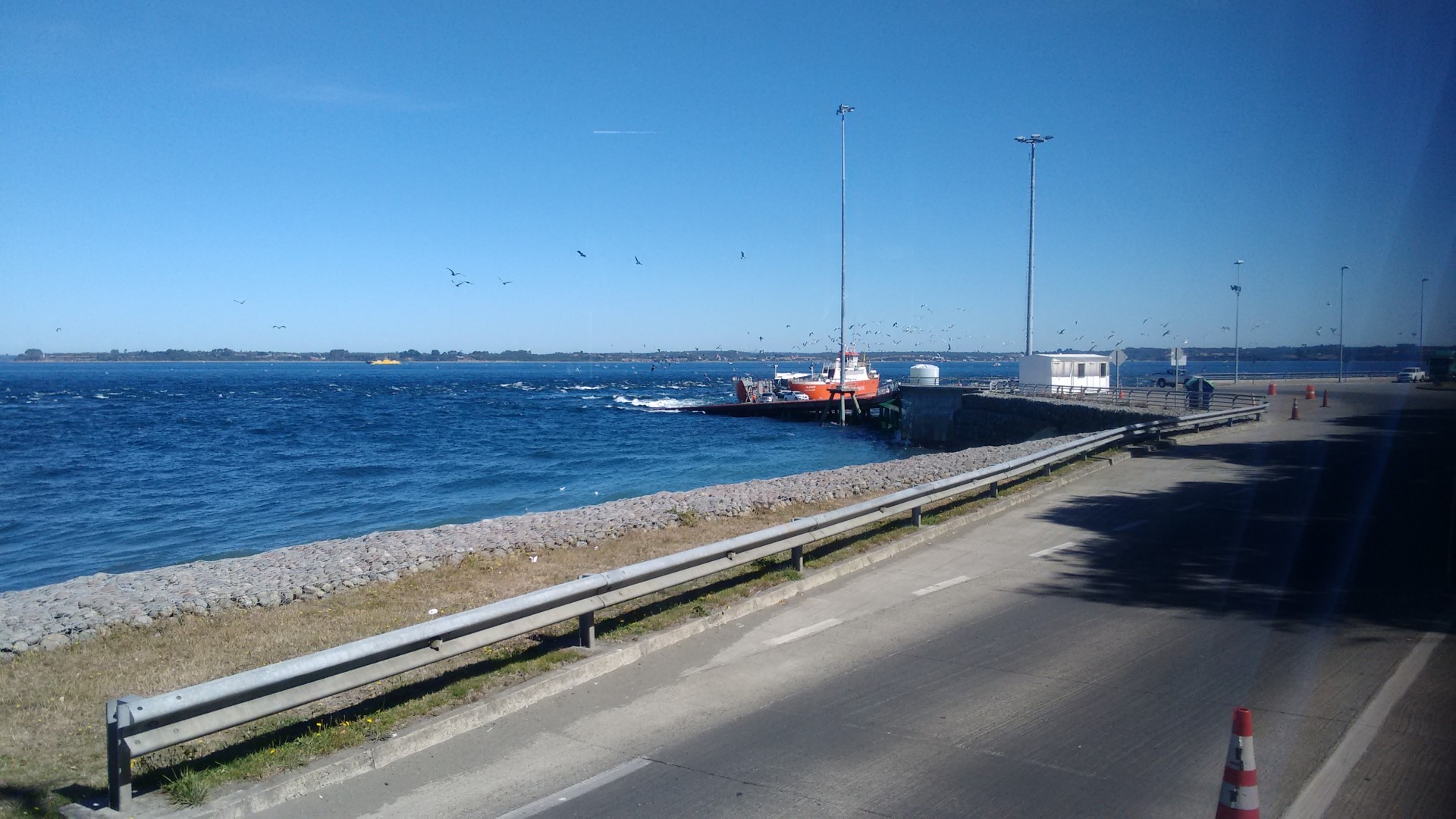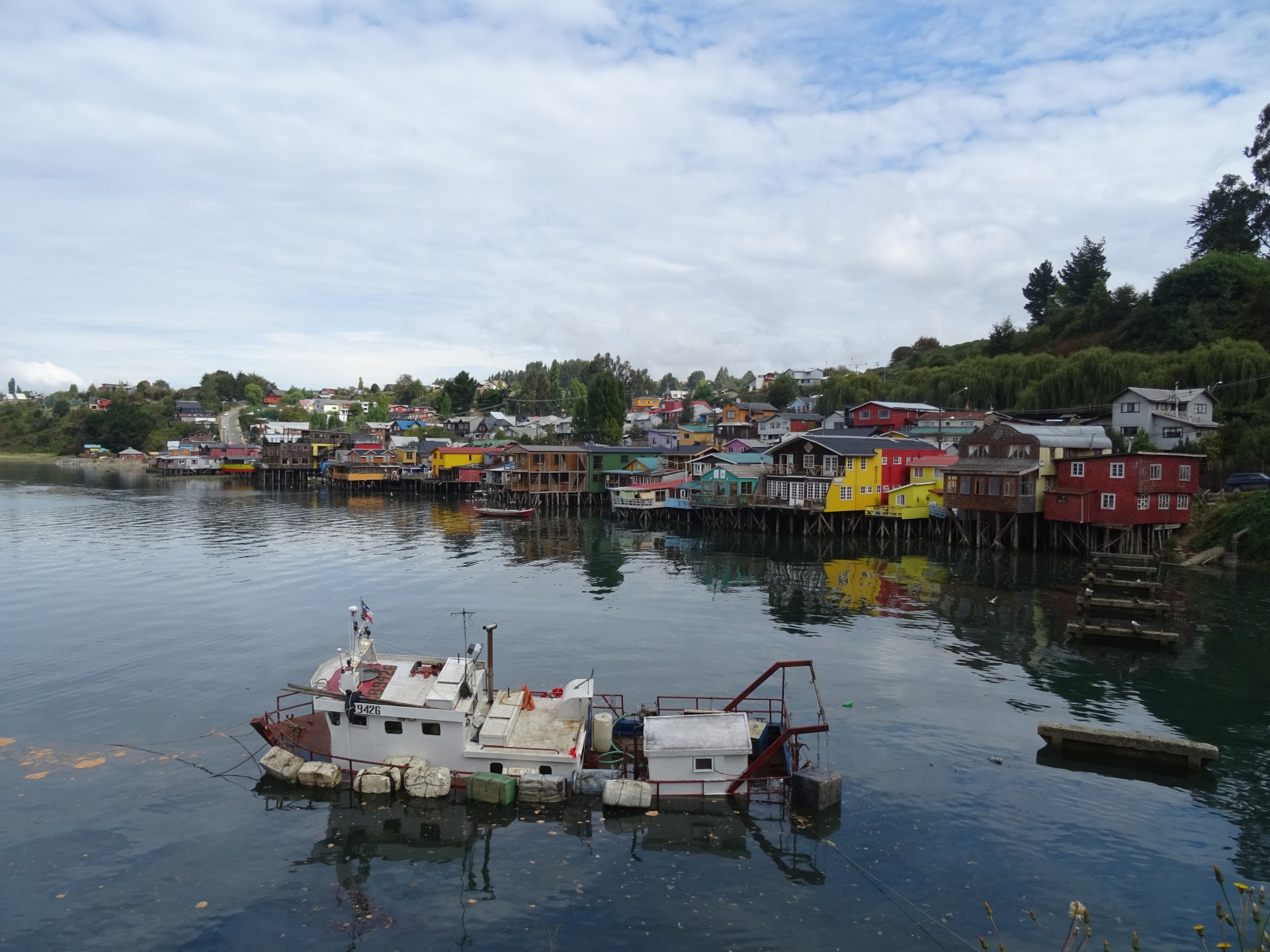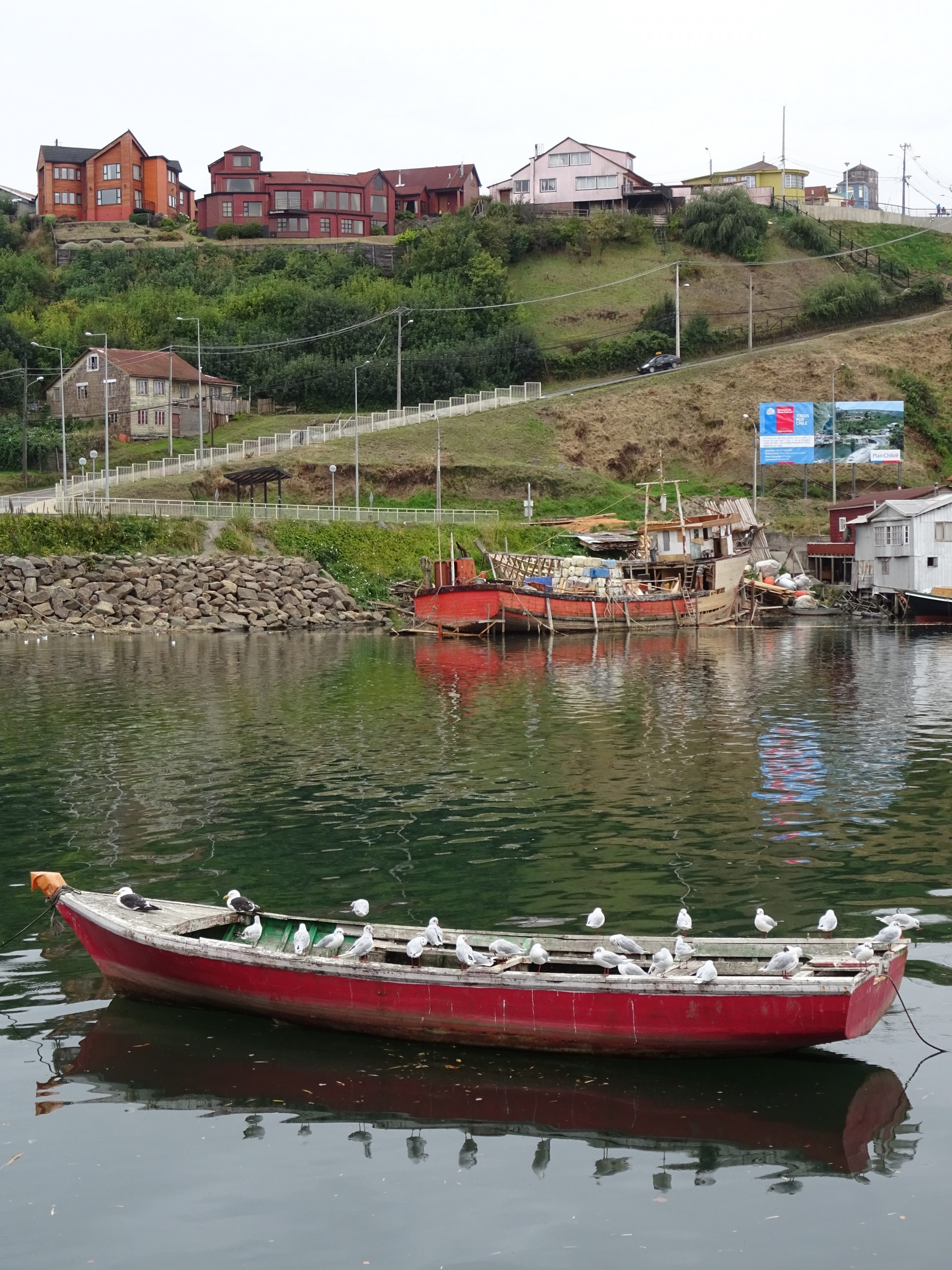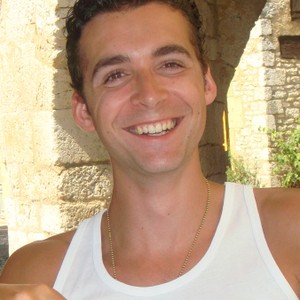Monday 28th March 2016 –
Everything went amazingly smoothly travelling to Castro. I was up at 6AM, and left the hostel at 7AM go see if I could book the bus to Osorno. By 8AM, I’d ended up on my desired bus, only all the way to Puerto Montt. Apart from a long stop for Chilean customs to rummage through everyone’s bags for errant apples, and get the dogs out, we progressed smoothly, even skipping Osorno entirely when the driver realised noone was going there. On arrival at Puerto Montt, it took all of five seconds before I got on a bus to Castro and I was eventually there at 6PM, with the dark rain clouds that had appeared on entry to Chile even parting to greet me. Considering I hadn’t expected to arrive till gone ten, I was pretty pleased.
Charmed my bus ride may have been, but my time on Chiloé didn’t quite live up to expectations. It was a place I had wanted to visit for a long time, even if I had never quite been sure particularly why, but I never really felt like I’d gotten under the skin of the area. I’d read in Bruce Chatwin’s ‘In Patagonia’ about the mystique and spirituality of the archipelago, but this was surprisingly difficult to find out about – most Chilotes seemed to dodge any mention of it.
Nevertheless, I ventured out from Castro in the search for adventure and knowledge. I was headed for this bus station one morning when I was flagged down by a Chilean duo, who asked me many questions, talked about themselves, and invited me along for a trip to a waterfall. They seemed genuinely nice and friendly, but despite travelling so long I still have a lingering suspicion of anyone who is too friendly and enthusiastic straight away – My mum always told me not to talk to strangers. I feel this is probably a character flaw.
I spoke to them for a good 45 minutes, regardless, before resuming my trip to Dalcahue, a small town further up the coast, and Isla Quinchao, one of the most accessible islands of the Chiloé archipelago. Reaching Dalcahue, I intended to skip across to the island straight away, exploring more on my way back when I would be sure not to miss the last bus. Unfortunately, the vague pointing (nowhere near the right direction) of my bus driver didn’t aid my search for the crossing. So it was, half an hour later, that I took the boat.
An Australian woman I met in my hostel had said that I could catch the bus to Achao when I got on the boat. That sort of thing counted on the bus not being crammed like a chicken coup though. There was no way I was getting on, and I realised I would have to arrange some other sort of transport. Soon enough, the Chilotés around me started talking to people in the cars, so I did the same. A blue jeep-like vehicle popped into focus, so I asked. It was a Spanish trio on holiday, two adults and a kid (who due to my age estimations I was never quite sure what their relations were), but they were only going to Curaco de Velez, the first town on the island. I hopped in anyway. How could I turn down such an opportunity for a first hitchhike?
Paul, the driver in this maybe/maybe not family, sped down the road to Curaco as my continually rusty Spanish was pressed into action. It turned out they were searching for a particular museum, which was somewhere around. As we reached Curaco, he asked if I wanted to come with them, and after agreeing we zoomed up and down some hills in search of the dates place, dodging pedestrians and cattle as they appeared around each bend. We never found it. No building loomed like a museum, and even if it was one of the others, they weren’t open. We sped back to Curaco.
The jeep pulled up in the centre of the tiny town, and I thanked Paul and the others. It had been a whirlwind ride, but a fun one, and was the most interesting part of the day. Curaco was sweet, the architecture a continuation of the wooden slats style I first saw in Puerto Montt and Castro, but I couldn’t find anything to elaborate on the hostel and meaning of the place. It was much the same for Achao, at the far end of the island.
I met a couple of German girls the following morning, at breakfast. Malin and Ka Tinka. They were both teaching German in Chile, which I hadn’t realised there was really a market for, and had rented a car to explore Chiloé. When I discovered they were going to the national park too, I managed to blag a lift. Twice in two days!
We stopped at Chonchi on the way. Just like Curaco de Velez and Achao, we had been told this was really lovely, but just like those, we found it empty. This time there was an excuse – Easter was upon us, and life as you know it shuts down here on Chiloé. Nevertheless, we didn’t find ourselves enamoured. It was nice, but not amazing. Maybe Whitby is just too high a benchmark for a seaside town?
We carried on to Cucao, and the national park though. After driving over rolling hills, and what would be a lovely biking road, we arrived, and promptly stopped by the beach. It opened straight out onto the Pacific, and the oceans aggression was immediately visible in its crashing waves. The dunes were littered with crab shells and weird jelly creatures, and the water looked cold as ice. The three of us came to the conclusion not to swim, before going to the national park. Certainly one of the more odd national parks I’ve been to, the trails there were really short – no more than a couple of miles at the most. It was a nice little area, but like the rest of Chiloé, I just felt there was something missing.
Ancud, in the north of Chiloé, was my final destination on the island, in my hope to capture a bit of the magic. With the ruins of an old fort which played a role in the fight for independence, some hidden beaches, and tours to see penguins in the right season, it’s probably the town with the most to do. It was nice, but not astonishing. After a couple of days of exploration, I left ancud, and eventually Chiloé, underwhelmed. Just before I disappeared, the clouds came out once more, and it seemed this was more like the Chiloé I had expected to see – rainy and miserable, but with another side. Maybe I just missed it.



















Maybe you’re just missing a travelling companion that you can criticize and poke fun at?
That is true, it does provide a lot of entertainment!